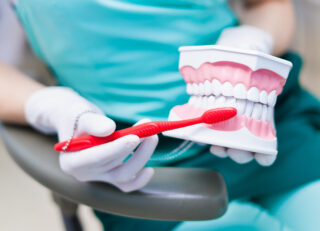
Flossing is an essential part of any oral care routine. While brushing your teeth is undoubtedly important, flossing helps remove plaque and food particles from hard-to-reach areas between your teeth and along the gumline. In this blog, we will explore the benefits of flossing, demystify common misunderstandings, provide practical tips, and discover the link between flossing and overall oral health.
Flossing plays a crucial role in maintaining oral health. When we brush our teeth, it is difficult to reach the spaces between them, leaving behind food debris and plaque. Flossing reaches these areas, preventing the buildup of plaque, reducing the risk of carious decay, gum disease, and bad breath.
Additionally, flossing helps maintain healthy condition of the gum. Plaque buildup can lead to gum inflammation, causing gingivitis and eventually progressing to periodontitis, a severe gum infection that can lead to bone loss and tooth loss. By flossing regularly, you remove plaque and debris, minimizing the risk of gum disease and promoting good gum health.
There are several misunderstandings regarding flossing that need to be addressed. One common thought is that flossing is only necessary when food is visibly stuck between teeth. However, most of the time plaque is not visible, and it can develop even without obvious food particles. Routine flossing prevents plaque buildup, ensuring a healthier mouth.
Another myth is that flossing could lead to gum bleeding and should be avoided if it occurs. The truth is, bleeding gums may indicate early-stage gum disease or incorrect flossing technique. With regular flossing, your gums will become healthier, and bleeding should stop. If bleeding persists, it’s important to consult your dentist for an evaluation.
Learning the correct flossing technique is critical to reap the full advantages. Follow these steps for effective flossing:
a. Choose the right floss: There are a wide range of floss available, such as waxed, unwaxed, flavored, or tape. Choose the one that suits your preferences and dental needs.
b. Start with enough floss: Take about 30-40 cm of floss and wind it around your middle fingers, leaving a few distance to work with.
c. Hold the floss: Hold the floss tightly between your thumbs and index fingers, leaving about 3 cm of floss to glide between your teeth.
d. Glide gently: Insert the floss gently between two teeth, following the natural curve of each tooth. Avoid snapping the floss and harm your gums.
e. Curve around the tooth: Form a C shape with the floss around the base of the tooth, reaching below the gumline. Gently move the floss back and forth to remove plaque and debris.
f. Repeat and be thorough: Use a fresh section of floss for each tooth, including both sides. Remember to floss the back of your last tooth as well.
Keeping good oral health is more than having a beautiful smile; it is also connected to overall health. Poor oral hygiene and gum disease have been linked to various systemic conditions, including cardiovascular disease, diabetes, and respiratory infections. By incorporating flossing into your daily is an investment in your dental health and overall well-being. By understanding the importance of flossing, adopting proper techniques, and dispelling common myths, you are well on your way to achieving a healthy and confident smile. Remember, consistency is key! Make flossing a habit, and gain the long-term benefits it offers. So, grab your dental floss and start flossing your way to a brighter, healthier future. Your smile will thank you!
If you have any questions about flossing, please contact us at (07) 3448 9279.


